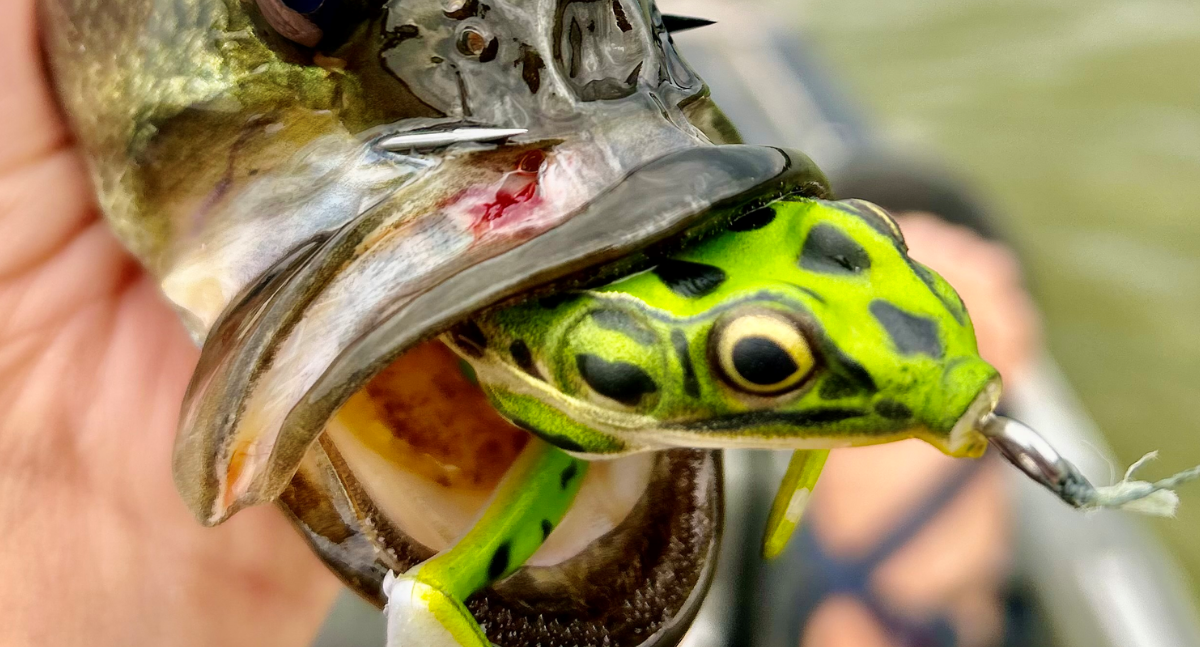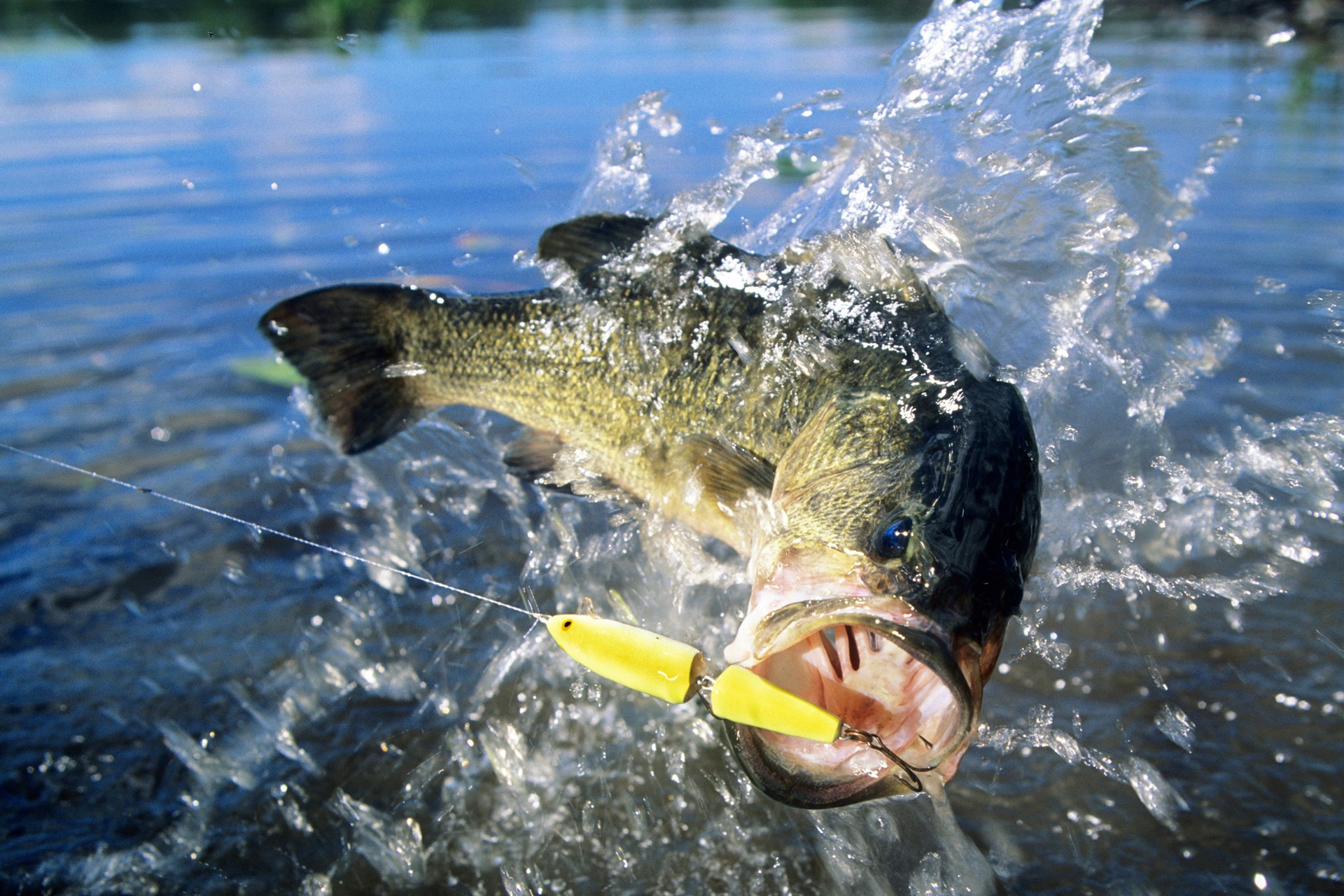Bass Lures: Seasonal Color Selection Secrets Revealed
Discover the very best Techniques for Picking Bass Lures for Your Next Fishing Expedition
Choosing the best bass Lures can dramatically affect angling success. Anglers should consider numerous variables, such as seasonal patterns and water clarity. Understanding bass actions is crucial (Bass Lures). Selecting Lures that mimic all-natural victim can result in much better results. Several are not sure concerning the best methods to carry out. What approaches should one focus on to enhance their angling experience? The solutions depend on examining particular conditions and adapting appropriately
Comprehending Bass Behavior and Habitat
Understanding the subtleties of bass actions and habitat is vital for any angler intending to improve their fishing success. Bass are often found in numerous atmospheres, including lakes, rivers, and tanks, where they look for structure such as submerged rocks, plants, and fallen trees. Their habits is greatly influenced by water temperature level, light levels, and offered forage.
During warmer months, bass have a tendency to be much more energetic, typically inhabiting shallower waters, while in cooler months, they retreat to much deeper areas. Furthermore, bass show patterns of feeding, frequently being extra hostile throughout dawn and sundown. They are opportunistic killers, exploiting smaller sized fish, insects, and crustaceans. Comprehending these variables can aid anglers recognize prime fishing places, along with the ideal times to fish. Identifying bass actions in connection to their environment is important for successful angling, leading anglers in making notified choices regarding where to cast their lines.
Matching Lures to Seasonal Issues
As anglers adapt their strategies to transforming seasons, matching Lures to seasonal problems comes to be a vital method for boosting fishing success. In spring, when bass are emerging from winter months dormancy, anglers often utilize spinnerbaits and shallow-running crankbaits to imitate the motions of prey. Summer demands a shift to topwater Lures or soft plastic worms, as bass seek color and cooler waters. During the fall, when bass are fattening up before winter, larger Lures that mimic baitfish can be efficient. Wintertime asks for an extra refined strategy; jigs and slow-moving finesse baits often yield far better outcomes as bass end up being lethargic. Recognizing these seasonal patterns assists anglers choose the appropriate attractions, thereby boosting their chances of an effective catch. By straightening appeal options with the natural behavior of bass throughout the year, anglers can optimize their angling experience and boost their overall success on the water.
The Relevance of Shade Selection
Color option plays a crucial function in bass angling, as it can dramatically impact a fisher's success. Factors such as water clarity, seasonal changes, and the details choices of various bass varieties all affect which colors are most reliable. Understanding these elements enables fishermens to make educated options that enhance their fishing experience.
Water Clarity Factors To Consider
When the water clearness varies, choosing the best bass lure color ends up being critical for drawing in fish. In clear water, all-natural shades such as shad or bluegill patterns often tend to be extra reliable, as they simulate the victim bass are accustomed to seeing. Conversely, in dirty or stained water, brighter shades like chartreuse or fire tiger can enhance presence, making it easier for bass to detect the lure. The contrast in between the lure and the surrounding setting plays a substantial role in angling success. Anglers ought to also think about the time of day; lighter shades may work much better in brilliant sunshine, while darker colors can be a lot more reliable throughout low-light problems. Adapting attraction color to water quality enhances the opportunities of a successful catch.
Seasonal Color Scheme
Just how do seasonal changes affect bass habits and appeal efficiency? As temperatures shift throughout the year, bass adjust their feeding routines and preferred environments, making shade choice vital for successful fishing. In spring, when bass spawn, brilliant shades like chartreuse can attract attention. Summertime months typically require even more all-natural shades, such as environment-friendly pumpkin or shad patterns, as bass look for to assimilate with their environments. Throughout loss, vivid shades like orange and red mimic the changing foliage, enticing bass as they get ready for winter. In winter, subdued tones such as gray or white might be more effective, as bass become lethargic. Inevitably, comprehending seasonal color patterns enables anglers to select Lures that resonate with bass's existing actions, improving their opportunities of success.

Species-Specific Preferences
Recognizing species-specific choices is important for anglers aiming to enhance their appeal choice. Various bass types, such as largemouth and smallmouth, show one-of-a-kind color choices based on their environment and feeding behaviors. Largemouth bass usually like darker colors, specifically in murky waters, where shades like dark and black green resemble all-natural prey. In contrast, smallmouth bass are more probable to react to brighter colors, click this such as chartreuse and orange, especially in clear waters. In addition, water quality and light conditions can influence these choices, making it crucial for fishermens to adjust their lure color appropriately. By taking into consideration these species-specific choices, anglers can enhance their possibilities of a successful fishing trip, ultimately enhancing their general experience on the water.
Choosing the Right Entice Type for Different Scenarios
Selecting the ideal appeal type for different fishing situations is important for success on the water. Anglers have to think about aspects such as water clearness, climate condition, and the bass's feeding routines. For murky water, darker-colored lures, such as jigs or spinnerbaits, can be reliable, as they produce a solid silhouette. In clear water, natural-colored Lures like soft plastics or topwater lures might entice skeptical bass.
When fishing in heavy cover, making use of heavy jigs or weedless gears can assist navigate through challenges without snagging. On the other hand, open water situations might take advantage of crankbaits or swimbaits that can cover greater distances. Furthermore, throughout cooler months, slower-moving Lures have a tendency to be much more efficient, while warmer conditions may require faster retrieves. By adapting appeal choices to particular atmospheres, anglers increase their chances of a successful catch.
Experimenting With Size and Action

Anglers often explore a variety of learn the facts here now sizes and activities to figure out what jobs best under differing conditions. A slow-moving, subtle action might be perfect in cooler water, while a quickly, hostile obtain can be a lot more effective in warmer temperature levels. By meticulously observing the bass's reactions to these variants, anglers can refine their method and boost their opportunities of an effective catch. Ultimately, the appropriate combination of dimension and action can make a considerable distinction on the water.
Checking Out Water Conditions for Better Lure Selections
Understanding water problems is vital for choosing the best bass appeal. Aspects such as water clarity and temperature can dramatically affect fish habits and feeding patterns. By examining these conditions, fishermens can make informed choices that enhance their possibilities of a successful catch.
Examining Water Clearness
Exactly how does water clearness affect the efficiency of bass appeals? Water quality considerably affects bass habits and the presence of attractions. In clear water, bass have a tendency to be extra cautious, making natural-colored Lures extra efficient as they resemble victim carefully. Fishermens might pick lighter, subtler shades to stay clear of terrifying fish. Alternatively, in murky or stained water, more vibrant and even more dynamic colors stand apart, standing out even in reduced presence conditions. Furthermore, the kind of attraction can differ; slower-moving Lures may work much better in clear water, while quicker, a lot more hostile presentations can entice bass in murkier settings. Recognizing the clearness of the water allows anglers to pick Lures that optimize their chances of success during their fishing expedition.
Comprehending Water Temperature Level
As water temperature changes, it directly influences bass actions and their feeding patterns, making it crucial for fishermens to take into consideration when selecting appeals. Typically, bass like warmer temperature levels, normally between 65 ° F and 75 ° F, where their metabolic process is enhanced, causing increased feeding activity. In cooler water, bass end up being sluggish and may prefer slower-moving lures, such as jigs or soft plastics. On the other hand, throughout warmer months, faster presentations like crankbaits or topwater Lures can be more efficient. Fishermens need to additionally take into consideration seasonal adjustments; for instance, spring warming results in hostile feeding as bass prepare to spawn. By understanding exactly how temperature level impacts bass, fishermens can make educated decisions on lure choice, dramatically improving their opportunities of success.
Tips for Organizing and Maintaining Your Tempt Collection
While lots of fishermens concentrate on picking the best Lures for their following angling trip, maintaining an appeal and organizing collection is equally vital for improving effectiveness and efficiency. A well-structured collection enables anglers to promptly situate the Lures they need, reducing time spent rummaging via tackle boxes.
To start, fishermens ought to categorize Lures by type-- crankbaits, jigs, or soft plastics-- making it less complicated to find certain choices. Using tackle trays or boxes with flexible compartments can assist maintain every little thing organized. Classifying containers simplifies the process additionally, aiding quick identification.
Normal upkeep is additionally crucial; fishermens need to check Lures for indications of wear, such as rusted hooks or harmed paint, and replace them as needed. Cleaning up Lures after each trip avoids deterioration and ensures longevity. By carrying out these organizational and upkeep approaches, anglers can enhance my website their angling experience and guarantee their Lures are constantly in ideal condition.
Regularly Asked Questions
What Are the very best Brands for Bass Lures?
The best brands for bass Lures consist of Rapala, Strike King, and Berkley. These brand names are renowned for their high quality, effectiveness, and advancement, appealing to both beginner and seasoned fishermens looking for successful fishing experiences.
The Amount Of Lures Should I Take on a Journey?
A regular angling journey must include around five to ten lures, permitting for convenience while staying clear of mess. This option must encompass various kinds and shades to adapt to changing problems and fish choices.
Can I Make My Very Own Bass Lures?
Yes, people can make their own bass Lures making use of different materials and strategies - Best Bass Lures South Africa. Crafting Lures enables personalization, enabling fishermens to experiment with dimensions, colors, and shapes to match certain fishing problems and preferences
What's the Average Life-span of a Bass Entice?
The ordinary life expectancy of a bass attraction differs, typically lasting from a couple of months to a number of years, depending on material high quality, use regularity, and ecological problems. Correct treatment can considerably expand a lure's usability.
Exist Certain Lures for Night Fishing?
Yes, there specify Lures created for night angling. Dark shades and Lures that create vibrations, such as spinnerbaits or jigs, usually attract bass in low-light problems, improving presence and activating predacious reactions.
Alternatively, in murky or stained water, brighter colors like chartreuse or fire tiger can enhance visibility, making it simpler for bass to find the lure. Larger Lures can attract larger bass, while smaller sized Lures may be extra reliable for capturing smaller sized fish. Furthermore, the type of lure can differ; slower-moving Lures might function much better in clear water, while faster, a lot more hostile discussions can tempt bass in murkier environments. As water temperature rises and fall, it directly affects bass habits and their feeding patterns, making it crucial for fishermens to think about when picking attractions. While numerous fishermens concentrate on selecting the best Lures for their following angling trip, organizing and maintaining an appeal collection is similarly essential for boosting efficiency and efficiency.